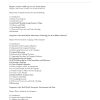The New leadership Challenge Creating the Future of Nursing 3rd edition by Sheila Grossman, Theresa Valiga 0803620454 9780803622272
$50.00 Original price was: $50.00.$25.00Current price is: $25.00.
Authors:Unknown , Author sort:Unknown
The New leadership Challenge Creating the Future of Nursing 3rd edition by Sheila Grossman, Theresa Valiga- Ebook PDF Instant Download/Delivery. 0803620454, 9780803622272
Full download The New leadership Challenge Creating the Future of Nursing 3rd edition after payment

Product details:
ISBN 10: 0803620454
ISBN 13: 9780803622272
Author: Sheila Grossman
Whatever your role, practice or educational environment, here are the tools and techniques you can use to realize your leadership potential, advance your career, and contribute to the future of nursing.
The New leadership Challenge Creating the Future of Nursing 3rd Table of contents:
CHAPTER 1: The Nature of Leadership: Distinguishing Leadership from Management
- LEARNING OBJECTIVES
- INTRODUCTION
- BRIEF OVERVIEW OF SELECTED THEORIES OF LEADERSHIP
- Great Man Theory
- Trait Theories
- Situational Theories
- Contemporary Theories
- LEADERSHIP AND MANAGEMENT
- TASKS OF LEADERSHIP
- SPECIFIC DISTINCTIONS BETWEEN LEADERSHIP AND MANAGEMENT
- Goals
- Conceptions of Work
- Relationships with Others
- Sense of Self
- TABLE 1-1: Differences Between Leadership and Management
- ELEMENTS OF LEADERSHIP
- BOX 1–1: Elements of Leadership
- Vision
- Communication Skills
- Change
- Stewardship
- Developing and Renewing Followers
- Personal Attention
- Role Modeling
- Precepting
- Mentoring
- CONCLUSION
- CRITICAL THINKING EXERCISES
- THE GROSSMAN & VALIGA LEADERSHIP CHARACTERISTICS AND SKILLS ASSESSMENT
- Part 1
- Part 2
- Interpretation of Scores
- Part 1: Perception of what makes a good leader
- Part 2: Perception of your own ability to lead
- LEADERSHIP SKILLS: RATE YOURSELF
- Interpretation
- References
CHAPTER 2: The World and New Leadership: Changing Our Thinking About Leadership
- LEARNING OBJECTIVES
- INTRODUCTION
- PREPARING NURSE LEADERS
- Developing Leadership
- CHAOS THEORY
- QUANTUM THEORY AND THE NEW SCIENCE
- New Science of Leadership Case Study
- SUPPORTING PERSPECTIVES AND PERSPECTIVE TRANSFORMATION THEORY
- CONCLUSION
- CRITICAL THINKING EXERCISES
- References
CHAPTER 3: Followership and Empowerment
- LEARNING OBJECTIVES
- INTRODUCTION
- Figure 3–1: Old and contemporary conceptualizations of leader-follower interactions
- Figure 3–2: Leaders need followers
- THE CONCEPT OF FOLLOWERSHIP
- Case Study
- TYPES OF FOLLOWERS
- Figure 3–3: Types of followers
- Figure 3–4: Followership styles
- CHARACTERISTICS OF EFFECTIVE OR EXEMPLARY FOLLOWERS
- TABLE 3-1: Traits of Leaders and Followers
- SOURCES OF POWER
- EMPOWERING SELF AND OTHERS
- STRATEGIES TO DEVELOP EFFECTIVE FOLLOWERSHIP SKILLS
- Figure 3–5: The follower role is quite common
- CONCLUSION
- CRITICAL THINKING EXERCISES
- FOLLOWERSHIP STYLE TEST
- Scoring
- References
CHAPTER 4: Leadership as an Integral Component of a Professional Role
- LEARNING OBJECTIVES
- INTRODUCTION
- TYPES OF LEADERSHIP
- Transactional Leadership
- Transformational Leadership
- Transformational Leadership and Nursing Practice
- EMOTIONAL INTELLIGENCE
- Emotional Intelligence/Patient Care Case Study
- SELF-ESTEEM AND LEADERSHIP IMAGE
- BOX 4–1: Expect Success Through Self-Confidence, Not Entitlement
- WOULD-BE LEADERS BECOME LEADERS
- LEADERSHIP AS AN INTEGRAL COMPONENT OF EACH NURSE’S ROLE
- CONCLUSION
- BOX 4–2: Learning Lessons from Geese
- CRITICAL THINKING EXERCISES
- References
CHAPTER 5: Vision and Creativity
- LEARNING OBJECTIVES
- INTRODUCTION
- THE CONCEPT OF VISION
- What Is Vision?
- Figure 5-1: A typology of visions
- WHY HAVE A VISION?
- Actualizing a Vision
- What Happens If There Is No Vision?
- Who Should Participate in Vision Development?
- Strategies to Assist People with Vision Development
- THE PROCESS OF CREATIVITY
- Figure 5-2: Mindmap of creativity
- Figure 5-3: Using our right brain
- Case Study: Development of a Vision Using Creativity
- The Significance of Creativity
- Using Creativity
- CONCLUSION
- CRITICAL THINKING EXERCISES
- HOW CREATIVE ARE YOU?
- References
CHAPTER 6: Gender Perspectives in Leadership
- LEARNING OBJECTIVES
- INTRODUCTION
- COMMON GENDER DIFFERENCES
- TABLE 6-1: A Businessman Versus a Businesswoman
- WOMEN’S WAYS OF LEADING
- COMBINING THE BEST OF “FEMALENESS” AND “MALENESS”
- TABLE 6-2: Becoming Androgynous
- Case Study
- STRATEGIES FOR WOMEN AND MEN TO BE SUCCESSFUL LEADERS IN THE FUTURE
- CONCLUSION
- CRITICAL THINKING EXERCISES
- References
CHAPTER 7: Disequilibrium and Chaos: Challenging, Invigorating, and Growth-Producing
- LEARNING OBJECTIVES
- INTRODUCTION
- ADJUSTING TO THE LEADER ROLE AND THE PRACTICE OF LEADERSHIP
- DEFINING CHAOS
- CHAOS IN NURSING
- COMPLEXITY OF THE REGISTERED NURSE ROLE IN THE CURRENT HEALTHCARE SYSTEM
- FACILITATING LEADERSHIP IN CHAOS
- CHANGE
- THE LEADER AS A CHANGE AGENT
- BOX 7–1: Principles of Change
- TABLE 7-1: The Use of Teams—Working with Followers
- FACILITATING THE CHANGE PROCESS
- TABLE 7-2: Results of Nurse Managers’ Rankings of Healthcare Executives’ Behavior During Change
- THE PROCESS OF CHANGE
- BARRIERS TO CHANGE
- DEALING WITH CONFLICT GENERATED BY CHANGE
- Conflict Management Case Study
- CONCLUSION
- Figure 7-1: Readiness-to-Change Quotient
- CRITICAL THINKING EXERCISES
- References
CHAPTER 8: Shaping a Preferred Future for Nursing
- LEARNING OBJECTIVES
- INTRODUCTION
- PREDICTING THE FUTURE
- GENERAL PREDICTIONS ABOUT THE FUTURE
- PREDICTIONS ABOUT THE FUTURE OF HEALTHCARE
- PREDICTIONS ABOUT THE FUTURE OF NURSING
- TABLE 8-1: Characteristics of the Past/Traditional and Future Healthcare Systems
- Approaches to Shaping a Preferred Future for Nursing
- CHARACTERISTICS OF NURSE LEADERS NEEDED TO CREATE A PREFERRED FUTURE FOR NURSING
- Phenomenon of Leadership: What Is New and Should You Change Your Practice?
- Case Study
- CONCLUSION
- CRITICAL THINKING EXERCISES
- References
CHAPTER 9: Developing as a Leader Throughout One’s Career
- LEARNING OBJECTIVES
- INTRODUCTION
- GENERAL APPROACHES TO LEADERSHIP DEVELOPMENT
- Lecture and Discussion: Formal Course Work
- Role-Playing and Simulation
- Sensitivity Training
- Role Modeling
- Institutes and Fellowships
- On-the-Job Training
- Reflection and Self-Assessment
- Summary
- Case Study in Developing as a Leader: Planned and Unplanned
- ENVIRONMENTS THAT FACILITATE LEADERSHIP DEVELOPMENT
- TABLE 9-1: Leadership Environment Assessment Survey
- EMPOWERMENT
- MENTORING
- What Is a Mentor?
- Myths About Mentors and Mentoring
- What Mentors Look for in Protégés
- Caveats Regarding a Mentor Relationship
- TABLE 9-2: What Mentors Look for in Protégés
- Benefits to the Mentor
- NETWORKING
- TABLE 9-3: Myths About Networking
- CONCLUSION
- CRITICAL THINKING EXERCISES
- References
CHAPTER 10: Conclusion
- LEARNING OBJECTIVES
- INTRODUCTION
- Case Studies
- ADRIENNE’S CAREER TRACK WHEN SHE IS WILLING TO ACCEPT MEDIOCRITY AND THE STATUS QUO
- ADRIENNE’S CAREER TRACK WHEN SHE STRIVES FOR EXCELLENCE AND IS A LEADER
- THE CONCEPT OF EXCELLENCE
- LEADERSHIP AND EXCELLENCE
- PROFESSIONAL INVOLVEMENT
- CONCLUSION
- CRITICAL THINKING EXERCISES
- References
People also search for The New leadership Challenge Creating the Future of Nursing 3rd :
the new leadership challenge creating the future of nursing pdf
challenges of a new leader
what is a leadership challenge
challenge the process leadership examples
the new leadership challenge pdf












